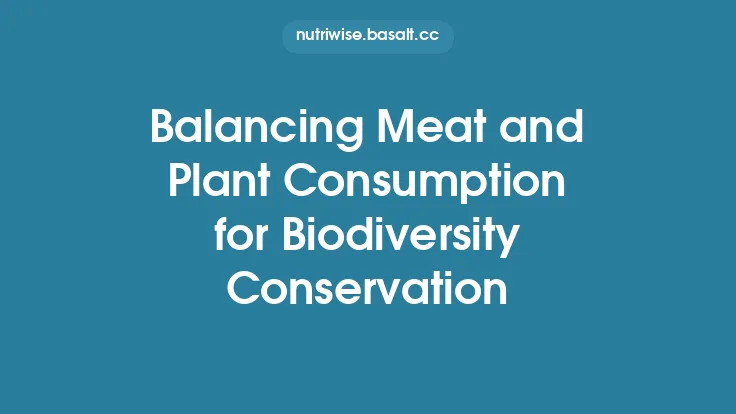East Asian cuisine is built upon a harmonious trio of staples—rice, vegetables, and soy—that have sustained billions of people for centuries. This dietary pattern reflects a deep cultural reverence for balance, seasonal variation, and the efficient use of locally available resources. By examining the historical roots, agricultural foundations, culinary techniques, and nutritional outcomes of these three pillars, we can appreciate how East Asian societies have crafted a diet that is both nutritionally robust and adaptable to modern lifestyles.
Historical Foundations of the Rice‑Centric Diet
Rice first arrived in the Yangtze River basin around 7,000 years ago, gradually spreading to the Yellow River region, the Korean Peninsula, and the Japanese archipelago. Its domestication was driven by the development of irrigated paddies, which transformed flood‑prone lowlands into highly productive fields. Over millennia, rice became more than a food source; it evolved into a cultural symbol of fertility, prosperity, and communal identity. Rituals such as the Chinese “Qingming” offerings, Korean “Chuseok” harvest celebrations, and Japanese “Oshogatsu” New Year meals all feature rice as a central element, underscoring its societal importance.
The Diversity of Rice Varieties and Their Roles
While white polished rice dominates daily meals, the region cultivates a remarkable array of rice types, each with distinct culinary functions:
| Variety | Grain Length | Typical Use | Nutritional Highlights |
|---|---|---|---|
| Japonica (short‑grain) | Short, sticky | Sushi, rice balls, porridge | Higher amylopectin, lower glycemic index |
| Indica (long‑grain) | Long, fluffy | Fried rice, pilafs | Higher amylose, quicker digestion |
| Glutinous (sticky) | Very short, very sticky | Mochi, rice cakes | High in resistant starch when cooled |
| Red/Black (pigmented) | Medium | Health‑focused dishes, salads | Anthocyanins, higher fiber, antioxidants |
| Aromatic (e.g., Jasmine, Basmati‑type) | Long, fragrant | Special occasion dishes | Volatile compounds (2‑acetyl‑1‑pyrroline) for aroma |
The processing of rice—from whole grain (brown) to polished white—affects its nutrient profile. Brown rice retains the bran and germ, providing fiber, magnesium, and B‑vitamins, whereas white rice offers a more readily digestible carbohydrate source, which is advantageous for high‑energy demands and certain medical conditions.
Vegetables: Seasonal Abundance and Culinary Techniques
Vegetables occupy a central place in East Asian meals, often prepared in ways that preserve texture, color, and micronutrients. The region’s temperate and subtropical climates support a wide spectrum of leafy greens, cruciferous vegetables, root crops, and sea vegetables.
Seasonal Rotation
- Spring: Asparagus, bamboo shoots, young mustard greens, and watercress.
- Summer: Eggplant, okra, cucumbers, and a variety of gourds.
- Autumn: Daikon radish, napa cabbage, mushrooms, and sweet potatoes.
- Winter: Kale, Chinese broccoli (gai lan), and fermented vegetables (e.g., kimchi, suan cai).
Seasonal rotation not only aligns with optimal flavor and texture but also maximizes the intake of phytonutrients that fluctuate with plant maturity and climate.
Cooking Methods and Their Nutritional Impact
| Technique | Typical Dishes | Effect on Nutrients |
|---|---|---|
| Stir‑frying (quick, high heat) | Bok choy with garlic, beef and broccoli | Retains water‑soluble vitamins (C, B) while adding a modest amount of oil for fat‑soluble vitamin absorption |
| Steaming | Dim sum vegetables, fish with ginger | Minimal nutrient loss; preserves delicate flavors |
| Fermentation | Kimchi, pickled radish | Enhances probiotic content, increases bioavailability of certain minerals |
| Braising (low, slow heat) | Soy‑based stews, braised cabbage | Breaks down tough fibers, making nutrients more accessible |
| Raw consumption | Salads, sashimi accompaniments | Maximizes vitamin C and enzyme content, though some anti‑nutrients (e.g., oxalates) may be higher |
The strategic use of these methods allows cooks to tailor the nutritional profile of each dish, balancing macronutrients and micronutrients throughout the day.
Soy: The Multifunctional Legume
Soybeans have been cultivated in East Asia for over 5,000 years, originally as a source of protein and later as a versatile ingredient in fermented, sprouted, and processed forms. The processing of soy yields a spectrum of products, each with unique textures, flavors, and health properties.
Core Soy Products
- Tofu (bean curd): Soft, firm, or extra‑firm varieties provide a complete protein source with all essential amino acids. The coagulation process (using nigari, gypsum, or lemon juice) influences calcium and magnesium content.
- Soy milk: A plant‑based beverage rich in isoflavones; fortification with calcium and vitamin D is common in modern markets.
- Miso: Fermented soybean paste, often combined with rice or barley, delivering probiotics, peptides, and a distinct umami profile.
- Tempeh: Fermented whole soybeans bound by Rhizopus mold, offering higher fiber and a nutty flavor.
- Edamame: Immature green soybeans, typically boiled or steamed, serving as a high‑protein snack with intact fiber.
- Soy sauce: A fermented condiment providing umami, sodium, and trace amounts of antioxidants.
Isoflavones and Hormonal Modulation
Soy is rich in phytoestrogens, particularly genistein and daidzein. These compounds can bind to estrogen receptors, exerting weak estrogenic or anti‑estrogenic effects depending on the hormonal milieu. Epidemiological data from East Asian populations suggest a correlation between moderate soy intake and reduced incidence of hormone‑related cancers, though individual responses vary based on gut microbiota composition (e.g., ability to produce equol).
Nutritional Profile of the Combined Pattern
When rice, vegetables, and soy are consumed together, the diet achieves a synergistic balance of macronutrients and micronutrients:
- Carbohydrates: Predominantly from rice, providing 70–80 % of daily caloric intake in traditional settings. The glycemic response can be moderated by pairing rice with fiber‑rich vegetables and protein‑dense soy.
- Protein: Soy supplies high‑quality plant protein, complementing the modest protein content of rice. A typical meal can deliver 15–20 g of protein, meeting a substantial portion of daily requirements.
- Fat: Generally low in saturated fat; most dietary fat originates from cooking oils (e.g., sesame, rapeseed) and the inherent unsaturated fats in soy.
- Fiber: Vegetables and whole‑grain rice (brown or red varieties) contribute soluble and insoluble fiber, supporting gut health and glycemic control.
- Micronutrients: Vitamin C, folate, potassium, and magnesium are abundant in vegetables; calcium and iron are supplied by soy (especially tofu prepared with calcium salts) and leafy greens; B‑vitamins are plentiful in rice bran and fermented soy products.
Health Implications and Evidence‑Based Outcomes
Cardiovascular Health
- Low Saturated Fat: The diet’s emphasis on plant proteins and minimal animal fat aligns with reduced LDL‑cholesterol levels.
- Isoflavones: Antioxidant and anti‑inflammatory properties of soy isoflavones contribute to endothelial function improvement.
- Potassium‑Rich Vegetables: High intake of potassium from leafy greens helps regulate blood pressure.
Metabolic Regulation
- Glycemic Modulation: Combining high‑glycemic rice with low‑glycemic vegetables and protein slows post‑prandial glucose spikes.
- Weight Management: The high satiety index of fiber‑rich vegetables and protein‑dense soy supports appetite control.
Cancer Prevention
- Fermented Soy Products: Miso and tempeh contain bioactive peptides that may inhibit tumor growth pathways.
- Cruciferous Vegetables: Compounds such as sulforaphane in bok choy and napa cabbage have chemopreventive effects.
Bone Health
- Calcium‑Rich Tofu: When prepared with calcium sulfate, tofu becomes a significant source of bioavailable calcium.
- Vitamin K: Green leafy vegetables provide vitamin K2, essential for bone mineralization.
Modern Adaptations and Urban Influences
Rapid urbanization and globalization have introduced new food items and cooking practices, yet the core triad remains resilient:
- Convenience Rice Products: Pre‑cooked, microwaveable rice retains the carbohydrate base while reducing preparation time.
- Hybrid Vegetables: Cross‑breeding has produced varieties with extended shelf life and enhanced nutrient density (e.g., purple kale).
- Plant‑Based Meat Alternatives: Soy‑derived textured vegetable protein (TVP) mimics meat texture, catering to flexitarian diets while preserving traditional flavor profiles.
- Fusion Cuisine: Incorporation of Western herbs, spices, and cooking techniques (e.g., grilling, sous‑vide) expands the sensory palette without displacing the staple components.
Sustainability Considerations
Water Use and Rice Cultivation
- System of Rice Intensification (SRI): A set of agronomic practices that reduce water consumption by up to 30 % while increasing yields.
- Alternate Wetting and Drying (AWD): Periodic drainage of paddies cuts methane emissions, a potent greenhouse gas associated with flooded rice fields.
Soy Production
- Crop Rotation: Soybeans fix atmospheric nitrogen, enriching soil fertility for subsequent rice or vegetable crops, reducing reliance on synthetic fertilizers.
- Reduced Deforestation: In East Asia, soy is primarily cultivated on existing agricultural land, limiting habitat loss compared with some other regions.
Vegetable Diversity
- Polyculture Systems: Intercropping vegetables with rice or soy enhances biodiversity, pest control, and soil health.
- Urban Farming: Rooftop and vertical farms increase local vegetable availability, decreasing transportation emissions.
Challenges and Future Directions
- Micronutrient Gaps: While the diet is rich in many nutrients, vitamin B12 (absent in plant foods) may be insufficient for strict vegetarians. Fortified soy products and occasional animal‑derived foods address this gap.
- Sodium Intake: Fermented condiments (soy sauce, miso, kimchi) contribute significant sodium. Strategies include low‑sodium formulations and portion control.
- Aging Population: Older adults may experience reduced appetite and digestive efficiency. Soft‑cooked vegetables, pureed soups, and nutrient‑dense soy preparations can help meet their needs.
- Climate Change: Rising temperatures and erratic rainfall threaten rice yields. Breeding heat‑tolerant rice varieties and expanding resilient crop systems are essential.
- Cultural Preservation: As dietary patterns shift, documenting traditional recipes and cooking methods ensures that the knowledge of balancing rice, vegetables, and soy is passed to future generations.
Concluding Perspective
The East Asian dietary pattern exemplifies a time‑tested model of nutritional equilibrium: carbohydrate‑rich rice supplies energy; a kaleidoscope of vegetables delivers fiber, vitamins, and phytochemicals; and soy provides high‑quality protein and bioactive compounds. Together, they create meals that are not only satisfying and culturally resonant but also supportive of long‑term health. By embracing sustainable agricultural practices, adapting to contemporary lifestyles, and addressing emerging nutritional challenges, this dietary framework can continue to nourish populations across the region and inspire global approaches to balanced eating.





